Android Community |
- HTC Edge quad-core coming in April but don’t forget Samsung, LG, or Motorola
- 8tracks releases Android app for human-powered Internet radio
- HTC Thunderbolt getting official MIUI support, download the ROM now
- Barnes & Noble fires back at Microsoft, calls for investigation
- HTC Ville leaks with ICS, super-slim profile and Super AMOLED display
- Amazon announces “thousands of apps” for the Kindle Fire
- Adobe officially halts development on Flash for Android
- Asus confirms no 3G Transformer Prime at launch
- LG confirms Optimus LTE heading to Bell in Canada
- ASUS Eee Pad Transformer Prime gets official: Tegra 3 quad-core Tab starting at $499
- NVIDIA announces Tegra 3 quad-core processor, we have all the details [Video]
- Samsung Galaxy Tab 7.0 Plus hands-on
- More HTC Edge details: NFC, 8.8mm, and Sense 4.0
- Japanese retailer Rakuten buys Kobo for $315 million
- PayPal for Android updates with NFC, tablet support
- Android-powered MOD Live makes you a ski slope Terminator
| HTC Edge quad-core coming in April but don’t forget Samsung, LG, or Motorola Posted: 09 Nov 2011 11:07 AM PST The HTC Edge that leaked this week will be one of the first smartphones to take advantage of the new NVIDIA Tegra 3 quad-core platform. The Edge should come to market around April of 2012 according to latest leaks but they aren’t the only ones aiming for Tegra 3. Samsung, Motorola, and LG have all already committed to T3 after looking at reports by Digitimes.
Although the HTC Edge is just a rumor for now, we’ve been told it was from a very reliable source and is in fact the real deal. The Edge, will be powered by the quad-core Tegra 3 processor, 1GB of RAM and sport a 1280 x 800 4.7″ SLCD 2 display. While also rocking an 8 megapixel camera on the back and staying well under 9mm thin. Basically a dream come true, especially for HTC fans. These rumors have not been confirmed by HTC and while they could very well be accurate, HTC has consistently used Qualcomm chipsets in the past and have not strayed. This would be a large change in direction from HTC but given the fact they were very late to the dual-core game because of their reliance on Qualcomm, I can understand the change. NVIDIA has been silent on Tegra 3 partners but with LG bringing the first Tegra 2 device to the market with the G2x, then Motorola quickly following with phones like the Droid X2 we expect a very similar and quick approach by them for Tegra 3. Digitimes reported Samsung, Motorola, LG, and obviously ASUS all partnered with NVIDIA on the Tegra 3 well ahead of HTC, so the chances they beat them to market with a quad-core phone is actually quite high. What does that mean? We have some extra powerful and juicy devices that will probably be leaking soon, so get ready. [via SlashGear] ) |
| 8tracks releases Android app for human-powered Internet radio Posted: 09 Nov 2011 09:29 AM PST The options for Internet streaming have never been wider, and for Android users, they just got a bit more so. 8tracks, an Internet radio service that takes pride in its human curated stations, has released the first version of its Android app to the Market. You can download it for free now.
8tracks is built on a simple principle: collections of eight songs each, chosen for their commonality along a theme or style. The playlists transition from one to another for uninterrupted listening. The idea is t0 recreate the experience of home-made mixtapes or burned CDs – or, for those of you who didn’t grow up watching Teenage Mutant Ninja Turtles, actual 8-tracks. Collections are tagged by style and artist, and you can “like” certain artists, songs, mixes or DJs to let the service learn your preferences Pandora-style. Each Mix is created by a DJ, some of whom are surprisingly well-known. Celebrity DJs include Rolling Stone, Pitchfork and Spin. If you like a particular song, you can tag it for easy recollection to buy it in |
| HTC Thunderbolt getting official MIUI support, download the ROM now Posted: 09 Nov 2011 08:31 AM PST The iPhone-aping MIUI family of custom Android ROMs is gaining a lot of support lately, and not just for that pretty interface. The latest device to get the official nod from the MIUI team is the HTC Thunderbolt, after the patient and dutiful efforts of the independent developers. The Thunderbolt won’t be added to the MIUI tree for a while, but you can download the latest feature-complete version from RootzWiki now.
For the uninitiated, MIUI is a community-created ROM that runs on a variety of Android phones, with a homescreen and color scheme that should be familiar to those with a hankering for iDevices. Phones like the Samsung Galaxy S II, Optimus 2X and DROID Incredible are officially supported. New and improved versions of the ROM are posted each and every Friday, making MIUI a popular choice for those who have to be on the bleeding edge. Full theme support and a variety of Gingerbread customizations are present. While the latest version of the (currently) unofficial Thunderbolt port is far from perfect, all the important bits are there, including access to Verizon’s 4G LTE. MMS is still non-functional, though that’s being actively pursued by lead dev “DroidVicious”. Some users are still reporting some battery issues and trouble getting a GPS fix. Try it out on your rooted Thunderbolt, but remember: Nandroid backups are your friends. Device Info
Display
Dimension & Weight
Battery & Power
Software
Hardware
Cellular Network
Device Connectivity
[via Phandroid] ) |
| Barnes & Noble fires back at Microsoft, calls for investigation Posted: 09 Nov 2011 08:01 AM PST At least one manufacturer isn’t kowtowing to Microsoft’s Android licensing push: Barnes & Noble is actively fighting Microsoft’s patent litigation in court. As an added bonus, the bookseller has urged US regulators to investigate Microsoft’s patents and the claims therein. B&N asserts that Microsoft is trying to drive up the price of the Android devices it competes with, thereby making its own Windows Phone 7 more attractive to manufacturers and consumers.
The claims seem valid enough. 53% of Android devices sold already pay some sort of royalty or kickback to Microsoft, the result of some extremely aggressive court battles and the resultant licensing deals. HTC and Samsung are among the biggest players affected, and tellingly, they also make Windows Phone 7 devices – one can’t help but wonder what kind of tit-for-tat is going on behind closed doors. One of the primary compaints of Microsoft’s detractors, including Google, is that in most cases it doesn’t actually articulate which of its patents are being violated or how. Barnes & Noble has a lot riding on Android, and having to pay Microsoft for every device sold won’t do anything good for its bottom line. Every Nook e-reader, from the lowly Nook SimpleTouch to the upcoming Nook Tablet, runs a modified version of Android designed to highlight Barnes & Noble’s digital library. As it continues to trade punches with Amazon in the marketplace, it has to go toe to toe with Microsoft in the courts, something that an official US investigation could only help. B&N hopes it can convince regulators to investigate Microsoft before the February court date. Device Info
Display
Dimension & Weight
Battery & Power
Software
Hardware
Cellular Network Device Connectivity
[via SlashGear] ) |
| HTC Ville leaks with ICS, super-slim profile and Super AMOLED display Posted: 09 Nov 2011 07:31 AM PST HTC’s spring lineup is starting to come into focus. In addition to the jaw-dropping Edge, the HTC Ville has also been leaked to BGR. While its specs aren’t quite as world-conquering as the former, it’s an impressive handset in its own right that embraces Ice Cream Sandwich and HTC’s upcoming Sense 4.0.
The Ville uses a 4.3-inch qHD (960 x 540) Super AMOLED screen, which is smaller than the Edge’s in both size and resolution. Note the lack of Android navigation buttons in the leaked render, an clear indication of Ice Cream Sandwich. Power comes from a dual-core 1.5Ghz Snapdragon processor and a 1650mAh battery. HTC’s unibody design precludes NFC, unfortunately, but the Ville will be less than 8 millimeters thin and features Beats audio, as do all of HTC’s upcoming high-end phones. The Ville is rumored for an April release along with the Edge, with an announcement at the Mobile World Congress in February. Currently the phone is set for HSPA+, which probably means a Europe-focused launch at the start. That doesn’t mean that is won’t come to the US, just that it probably won’t be released there initially – like the Desire and Sensation before it, the Ville seems likely to be a workhorse platform for several HTC models. We’ll add the disclaimer that all this information is wildly unofficial at the moment, so consider nothing set in stone. ) |
| Amazon announces “thousands of apps” for the Kindle Fire Posted: 09 Nov 2011 07:06 AM PST We always assumed that all the apps in the Amazon Appstore would find their way onto the Kindle Fire (albeit with varying degrees of compatibility) but just in case you were wondering, Amazon’s here to set the record straight. The company announced that major titles like Facebook, Netflix, Pandora, and games from developers like EA, Zynga and Rovio would land on the Kindle Fire when it releases next Tuesday. Appstore mainstays like the free paid app of the day will remain, and apps purchased on the Kindle Fire can be downloaded via the Appstore on any Android device.
Other major developers in the announcement include Gameloft, PopCap, Rhapsody, plus popular apps Allrecipes, Bloomberg, Cut the Rope, Doodle Fit, Doodle Jump, Fruit Ninja, Jenga, LinkedIn, Zillow, Airport Mania, Battleheart, Pulse, The Cat in the Hat, Quickoffice Pro, Jamie’s 20-Minute Meals, IMDb Movies & TV, Monkey Preschool Lunchbox, Twitter, Comics by comiXology and The Weather Channel. Amazon is quick to point out that its digital library of 18 million movies, TV shows, songs, books, magazines, apps and games will all be available on the Kindle Fire. Amazon didn’t mention Fire-specific versions of these apps, but as adoption grows, don’t be surprised to see specially-made alterations for the Kindle Fire hardware. Currently apps designed for Gingerbread default to a scaled-up smartphone interface even on a 7-inch or larger screen, so it would make sense for developers to tweak their apps accordingly. Between Kindle books, streaming media, the healthiest third-party app market out there and a $199 price tag, the Kindle Fire is well-positioned to take the world by storm. The Kindle Fire goes on sale November 15th. Device Info
Display
Dimension & Weight
Battery & Power
Software
Hardware
Cellular Network Device Connectivity
|
| Adobe officially halts development on Flash for Android Posted: 09 Nov 2011 06:45 AM PST
Here’s the official line, straight from Adobe:
What does this mean for Android users? In the short term, not much. Flash will still be available on the Android Market, and incremental updates will keep the player at least as stable as it is right now. It’s likely that the current Flash player should work for at least two or maybe even three more major releases of Android, though unfortunately it won’t be getting any performance increases beyond what hardware can boost. Problems will begin to arise when web developers begin implementing newer versions of Flash for desktop browsers. At that point, videos, ads and other Flash elements designed on later versions of Flash and the Flash player may see some serious compatibility issues, or simply stop functioning. This is a good ways out, though – you can expect at lest a year’s wait before compatibility problems start appearing. On the desktop, Flash will continue to be updated as it is now. While of course Flash has been a major selling point for Android since Froyo, getting it to work smoothly and efficiently is a chore for even top-end hardware, and it’s not surprising that Adobe had so much trouble adapting a system designed for desktop power to the mobile space. It is disappointing that they’ve decided to essentially quit after less than 18 months of public availability. Without official support, HTML5 will almost certainly take Flash’s place for websites designed for mobile video. ) |
| Asus confirms no 3G Transformer Prime at launch Posted: 09 Nov 2011 04:23 AM PST The Asus Transformer Prime tablet went official today with the price set at $499 and packing a Tegra 3 quad core CPU under the hood. The tablet will officially launch in December here in the states and then it will hit the UK in January. Sadly, the launch will be without Ice Cream Sandwich onboard, which was rumored to be the reason the tablet was delayed from the original November launch.
As you peruse the specs of the tablet, you might be wondering about a 3G version and hoping that is going to be offered. Asus has confirmed to sister site SlashGear that there will be no 3G version of the Transformer Prime offered at launch. The 3G tablet will presumably follow a few months behind the WiFi only version as Asus did with the original Transformer. Asus told SlashGear that they “might” release the 3G version later. The confirmation also came that the Transformer Prime will be coming to the US in 64GB and 32GB versions. In the UK, only the 32GB version will be offered. That optional keyboard dock will sell for $149. The 32GB version will sell for $499 in the US with the 64GB going for $599. [via SlashGear] ) |
| LG confirms Optimus LTE heading to Bell in Canada Posted: 09 Nov 2011 02:40 AM PST Late last month we mentioned that the Optimus LTE smartphone from LG was heading to Canada and would be landing on Bell. At the time, the thought was that the smartphone would be called the eye when it hit Bell. LG has confirmed that the Optimus LTE will be hitting Bell in Canada officially, but offers no firm launch date.
All LG is saying is that the smartphone will hit Bell “in the coming weeks.” Bell is still mum on when it will launch the device. It would be ideal that the smartphone would be launch before the holidays, but that remains to be seen. It’s also worth noting that the official LG press release says nothing about the smartphone being called the Eye on Bell. The device will operate on the Bell 4G LTE network and will have a 4.5-inch screen with a resolution of 1280 x 720. The display is a True HD IPS unit and should look great with promised natural color and battery efficiency. The Optimus LTE has a 1.5GHz dual-core processor, an 1830 mAh battery, and an 8MP rear camera. It also has HDMI output and supports DLNA. We still expect to see this smartphone hit carriers in the US as well. However, there is now official word on a launch outside Canada at this time. ) |
| ASUS Eee Pad Transformer Prime gets official: Tegra 3 quad-core Tab starting at $499 Posted: 08 Nov 2011 10:00 PM PST Oh man, I’m getting excited just thinking about this device. Today ASUS has officially announced the much anticipated Transformer Prime, the first tablet ever with a quad-core processor. Taking advantage of the brand new NVIDIA Tegra 3 quad-core mobile processor this will truly be the ultimate consumption device and the most powerful consumer tablet on the planet. Gaming will be like never before, and performance will be maximized all while still offering 12 hours of battery life. I can’t wait!
We have seen our fair share of leaks lately of the new Prime and its keyboard, then these benchmark results quickly followed. Today ASUS has finally made the Prime official although we all knew it was coming, especially with the Transformer Prime landing page launched late last month.
In cased anyone somehow managed to miss the specs here is what we know. The ASUS Transformer Prime will be rocking a 10.1″ Super IPS+ display at 1280 x 800 resolution (with Gorilla Glass), 1GB of RAM, 32GB or 64GB of internal storage, micro-SD and micro-HDMI support, front and rear cameras, and then that all important quad-core NVIDIA Tegra 3 processor. We have an 8 megapixel camera on the rear and a 1.2 front for video chat all wrapped in a brushed aluminum finish. The Transformer Prime will also be rocking an extremely thin form factor at just 8.3mm thin (0.33″) and weighs in at a mere 586g (1.29lbs). That is actually a hair thinner and lighter than the current champion in the Galaxy Tab 10, just for some comparison.
We didn’t get any official details on the battery size, but ASUS is stating 12 hours of hardcore battery life. You can watch several movies in a row on a road trip, or enjoy hours of hardcore gaming. The extremely efficient Tegra 3′s advanced power management and “companion core” will help make the Transformer Prime be not only the most powerful tablet, but have some of the best battery life available at the same time. Then with the optional keyboard dock pictured above the Transformer Prime will actually have a run-time of around 18 hours. I know you’re all wondering and sadly it has been confirmed to be launching with Android 3.2 Honeycomb at first, and will be updated to ICS as soon as possible. ASUS feels great about the Prime and will have an update out as soon as the code is ready. We reported earlier today the Prime was delayed til December specifically for the fact that it will launch with Android 4.0 Ice Cream Sandwich, but sadly that doesn’t appear to be the case. The ASUS Eee Pad Transformer Prime, the worlds first quad-core tablet will be $499 for the 32GB model and $599 for the 64GB variant. The optional keyboard dock will also be priced at $149. Who’s excited? 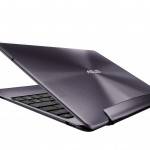 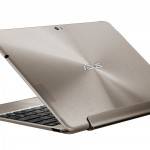 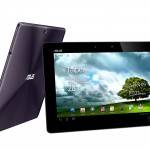 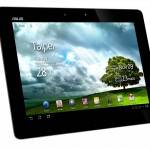 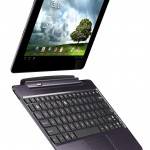 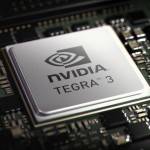  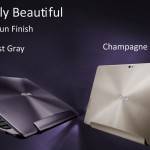    Device Info
Display
Dimension & Weight
Battery & Power
Software
Hardware
Cellular Network Device Connectivity
|
| NVIDIA announces Tegra 3 quad-core processor, we have all the details [Video] Posted: 08 Nov 2011 09:37 PM PST The time has finally come and today NVIDIA is taking the locks down and opening the doors to the world of quad-core mobile computing. We knew it was coming but today its finally official. Project Kal-El will indeed be called the NVIDIA Tegra 3 quad-core processor, and it will power our favorite smartphones and tablets very soon. This truly represents the next step in the evolution of mobile processors. From gaming to daily tasks, everything will benefit — even battery life. Below we have all the details and three awesome videos that will explain the power and efficiency that we will all come to love in NVIDIA’s Tegra 3.
Back in September NVIDIA outlined plenty of details regarding Kal-El and feel free to click that link for all the information. From the fact that Tegra 3 is actually sporting five cores we could call this Quin-core but that might confuse a few people. What will truly make the Tegra 3 special isn’t just that it will be the first quad-core mobile processor, but it has a 5th “companion core” that will handle all the tasks when the others aren’t needed. Making Tegra 3 extremely powerful while also being energy efficient and providing better battery life than Tegra 2 — Yes I said better (according to NVIDIA).
Now there are a lot of details we could cover from the vSMP technology in T3, to the companion core mentioned above, or the fact that it actually has twelve GPU cores (graphics) and more but instead I’ll start with a few of those video clips courtesy of NVIDIA we mentioned above. Any thoughts, or questions you may have will most likely be answered in the video demonstrations provided below. First, we have the “Companion Core” video that shows off and explains just what vSMP actually is and does. This stands for Variable Symmetric Multiprocessing. Which is a multi-core CPU architecture for extremely low power usage, and high performance both. When you need dual-core power it turns on and chugs out power, when you need all four from the quad-core you get those too. Then users only need a low power single-core for daily tasks like viewing photos or browsing the web the companion core kicks in and does the dirty work, while conserving power and battery by shutting down the other four. This is actually extremely impressive and will work throughout any OS and application, it will not need to be supported and instead will just work. This is one of the single handed biggest parts of Tegra 3, although you wont hear too much about it. Check out the video: NVIDIA Tegra 3: Companion Core We also have a graph in the gallery below that breaks down why and when each processing core gets activated and what processes require more or less power so don’t forget to look over the gallery of images below. Next we have an awesome video that will truly show you the graphical power of the NVIDIA Tegra 3 mobile processor. We first saw a demo of the NVIDIA game called Glowball back in May, but today we have something even better — Glowball 2: Underwater Glowball Part 2: Underwater The power of the NVIDIA Tegra 3 graphics will truly be unrivaled. With stunning visuals, realistic physics, real-life active lighting and more you can expect some truly impressive and immersive games to quickly come to market once T3 devices start hitting the shelves. I can’t wait for the Tegra 3 version of SHADOWGUN because that game is awesome — and we have a preview of it on T3 in our next video. Those first two impressive videos should have taught you plenty about the new NVIDIA Tegra 3 processor and what to expect, and some you might have already known. Obviously these videos are being made on the coming very soon ASUS Transformer Prime tablet and they mention that right in the video. The last video wont break details down quite the same way the first two did, but this is another extremely convincing video showing just what we can expect from games and gaming with the NVIDIA Tegra 3 platform. NVIDIA Tegra 3: Next-Gen Mobile Gaming
As you can see in the graph above users can expect double and sometimes triple the gameplay performance across the board with Tegra 3. Obviously not all games or applications will react the same but in general those are some huge improvements. Combine those increases with the vSMP technology you get stellar performance that wont tax the battery and user. Basically what this all comes down to is the NVIDIA Tegra 3 platform will be awesome. If the videos above don’t have you convinced then I’m not sure anything I say will either so I’ll just leave it at that. The fact that we are getting over double the performance while not suffering a hit on battery life is an impressive task and we are quite excited to see more. The ASUS Transformer Prime tablet will be the first device to take advantage of the new quad-core Tegra 3 processor and we’ll be getting one in for review as soon as humanly possible to give all these new and impressive features a test drive. I’m sure NVIDIA and all their partners are just as excited as we the consumer are about these new innovations and improvements and I’m assuming we’ll be hearing plenty soon regarding phones and tablets all rocking the NVIDIA Tegra 3 quad-core processor. I have a feeling this Christmas season will be snowing with quad-core tablets rocking the Tegra 3, we’ll just have to decide which one we want. Stay tuned for more details on T3 and quad-core devices as plenty are coming soon. 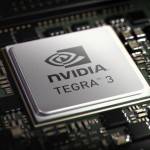      ) ) |
| Samsung Galaxy Tab 7.0 Plus hands-on Posted: 08 Nov 2011 07:00 PM PST Today we have another surprise for everyone that loves tablets and Samsung. In our labs is the brand new Samsung Galaxy Tab 7.0 Plus with Android 3.2 Honeycomb. This is the first tablet from Sammy in this small form factor to come with Honeycomb, and we’ll quickly be unboxing and checking it out in our hands-on video and pictures below.
For those that may not be paying full attention to the tablet market this 7″ slate was first spotted with a T-Mobile branding, then eventually made its way to Amazon’s pre-order pages. Shortly after that, and late last month it was officially announced by Samsung but now it’s finally available for those seeking a portable tablet solution.
All the details are available from the official announcement above but what we have is a 7″ 1024 x 600 resolution Android 3.2 Honeycomb tablet spiced up with Samsung’s Touch Wiz UI. Powered by a 1.2 GHz dual-core processor, 1GB of RAM, and coming in 16GB and 32GB flavors. Samsung has outfitted this thin and lightweight slate with a 3 megapixel camera on the rear and 2 megapixel around front for video chat. They’ve added a micro-SD slot for expanded storage and will also be providing a 4G version in the T-Mobile Galaxy Tab 7.0 Plus coming later this month.
Initial impressions are quite favorable and I think I’m really going to enjoy this tablet, as will customers. I’m just concerned with the pricing as this tablet will run you $399 for the 16GB model, and $499 for the 32GB — available from Amazon right now by clicking here. It is lightweight, sleek, thin, and powerful with that dual-core processor, but it’s not cheap that is for sure. Whether users will pay the premium or not remains to be seen, but this is a good alternative for those not wanting to carry around a larger tablet but don’t want the Kindle Fire either. This is a true tablet experience in the smaller form factor while keeping top of the line specs. We’ll be running it through its paces and checking overall performance this week. We’ll also compare it to the T-Mobile Springboard 7″ tablet we reviewed yesterday because they are very similar. Enjoy my quick hands-on video below and then check out all the photos in the full sized gallery and be sure to stay tuned as we’ll have a full rundown and comparison review later this week. Galaxy Tab 7.0 Plus hands-on 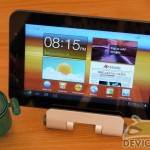 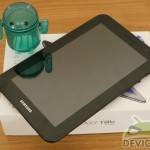 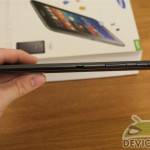 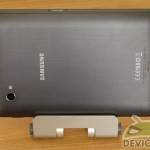 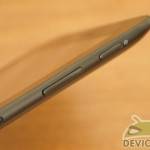 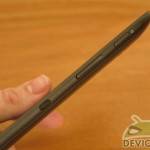 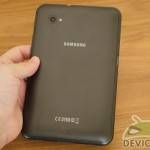 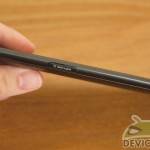 Device Info
Display
Dimension & Weight
Battery & Power
Software
Hardware
Cellular Network
Device Connectivity
|
| More HTC Edge details: NFC, 8.8mm, and Sense 4.0 Posted: 08 Nov 2011 06:00 PM PST Does the Galaxy Nexus leave you cold? Is the DROID RAZR too anemic for your power-hungry tastes? Is the Optimus LTE just a let-down? Then set your lustful eyes upon the top-secret HTC Edge, because according to some recent leaks to BGR, it’s the top contender for the heavyweight champion of the Android world.
According to an anonymous tipster (who lamentably didn’t have any new photos) the Edge will indeed be the first smartphone to feature Nvidia’s monster quad-core Tegra 3 processer running at a blistering 1.5Ghz. The processor is backed up by a full gigabyte of RAM and 32 gigs of on-board storage. The phone itself is updated as 8.8mm thin – very slim for a device with this much horsepower – but must go without a MicroSD card slot. The screen is a massive 4.7-inch 720p panel using the latest in S-LCD technology. Optical lamination makes the screen seem to float just below the glass with no space for air or dust. NFC and a large 1800mAh battery are included. An 8 megapixel camera and 720p front cam combine with Beats Audio the as-yet unseen Sense 4.0 to round out the package. There’s no mention of which Android version the Edge is running, but with a probable 2012 release date, we’ve got to hope it’s Ice Cream Sandwich. (Those navigation buttons on the front don’t automatically mean Gingerbread – ICS can use its soft buttons selectively.) Keep in mind that this is all very much rumor, and while the original photo/render looks legitimate enough, there’s nothing set in stone so far. [via SlashGear] ) |
| Japanese retailer Rakuten buys Kobo for $315 million Posted: 08 Nov 2011 04:58 PM PST E-reader dark horse Kobo has a new master: Japanese mega-retailer Rakuten. The company bought the e-reader manufacturer for $315 million, with most of it going to majority shareholder Indigo Books & Music, from Canada. The backing of a powerful retailer should help the relatively small company compete better with the likes of Barnes & Noble and Amazon in the e-reader/tablet marketplace. Like its competitors, Kobo sells ebooks on Android, iOS and its own line of e-readers.
Kobo will continue to operate out of Toronto under the current CEO, Michael Serbinis. The 50 million quoted Kobo users will be added to Rakuten’s 72 million shoppers for a formidable media presence. The backing of suck a large firm should help Kobo secure even better deals for books and periodicals, maybe even expand into music and movies to compete with Amazon on all fronts. Kobo’s latest e-reader, the full-color Kobo Vox, competes directly with the Kindle Fire, Nook Color and Nook Tablet. The 7-inch IPS tablet runs a modified version of Android Gingerbread with built-in access to Kobo’s bookstore and a selection of curated apps. The Vox is available right now (unlike the Fire and Nook Tablet) for $199. Though Kobo is a distant third in the e-book space, it should begin some aggressive expansion under new ownership – the tablet reader race just got even more interesting. [via SlashGear] ) |
| PayPal for Android updates with NFC, tablet support Posted: 08 Nov 2011 03:44 PM PST Finally, an alternative to Google Wallet – now if only I could find somewhere that actually accepts NFC payment. PayPal completely remade their Android app today, adding near-field communication support, though support for actual retail payments seems to be a little lacking. A completely new layout, a more minimal interface, and a new widget round out the additions. You can download the latest version in the Android Market now.
Tablet support has been added, even if it’s really just a scaled-up version of the smartphone UI. And it’s hard to imagine someone lugging a 10-inch XOOM into a 7-11 just to avoid pulling out their wallet. Unfortunately, It looks like you can only request money via the homescreen widget, not pay, and that necessitates another Android user nearby with an NFC-enabled phone. Who owes you money. Other than some widened support and those new features, it’s the same PayPal app that users have grown to rely on. A split bill calculator makes divvying up a dinner check or gas receipt easy. After a quick install on my Samsung Skyrocket review unit, the app seems stable, but unfortunately it isn’t recognizing the phone’s NFC chip. We’ll see if the support improves in a future update. Now if only Google would add PayPal support to Android Market purchases… ) |
| Android-powered MOD Live makes you a ski slope Terminator Posted: 08 Nov 2011 03:05 PM PST Little GPS gadgets have been a long-time fan for hikers, runners, and skiers, but it looks like Recon Instruments’ new MOD Live takes things to a higher elevation. The newest model of wearable computer pairs with your Android phone over Bluetooth to give you a live map of the area, share your run online, and access music and texts without reaching into your coat. The information is sent to a tiny screen that lives on the inside of your goggles.
This isn’t the first ski/snowboard computer that the company has produced, but it’s easily the coolest. The MOD Live gets all of its wireless goodness via the HQ Mobile app on Any Android phone. Liva statistics include your current speed, jump distance and airtime, overall run vertical, altitude, distance, and standard stopwatch features. Built-in navigation guides you to the nearest ski resort or the starting point for that new run you wanted to check out. You can even connect a sports cam to take live shot or – awesome - use it as a live rear-view camera. An upcoming SDK will allow third-party devs to create even more software to take advantage. Check out the official video below: A Bluetooth remote allows you to navigate through the on-screen menus, or just control music playback. The MOD Live costs $399 – not cheap, but this is some extremely specific tech here. A version of the wearable screen without Android connectivity will set you back $299, and goggles aren’t included in the purchase. But then, you’re going to pair them with your $500 Oakleys anyway, right? [via Gizmodo] ) |
| You are subscribed to email updates from Android Community To stop receiving these emails, you may unsubscribe now. | Email delivery powered by Google |
| Google Inc., 20 West Kinzie, Chicago IL USA 60610 | |

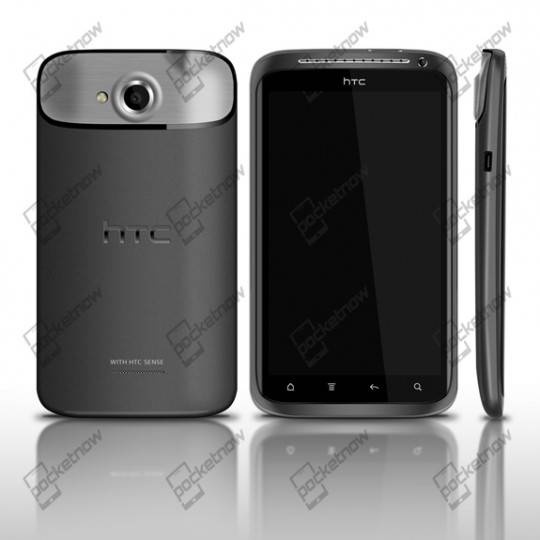

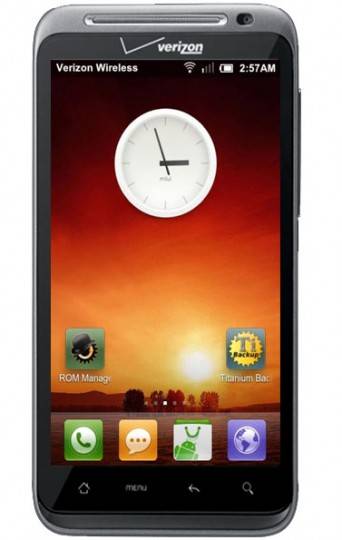

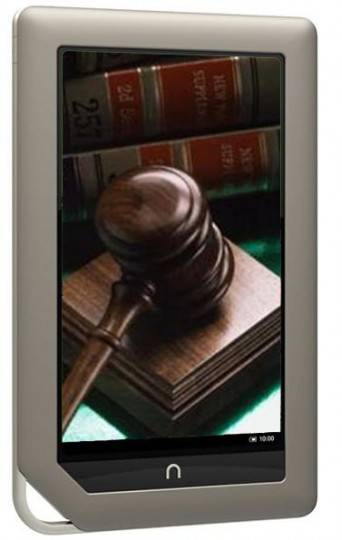
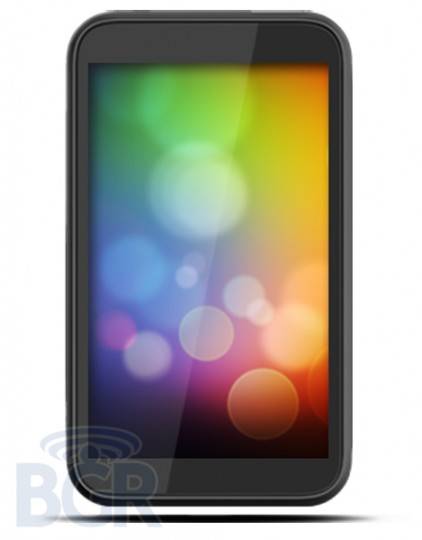
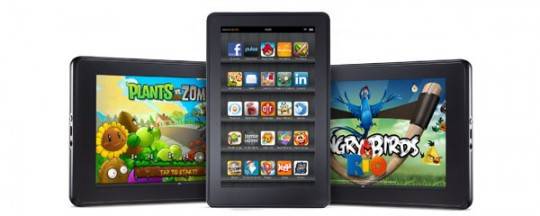
 Much speculation has been going on this morning about Adobe’s future plans for the mobile platform, and now it’s finally official. After some recent cutbacks including hundreds of layoffs, Adobe will
Much speculation has been going on this morning about Adobe’s future plans for the mobile platform, and now it’s finally official. After some recent cutbacks including hundreds of layoffs, Adobe will 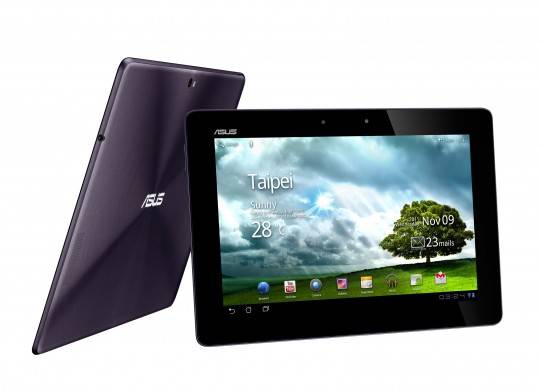
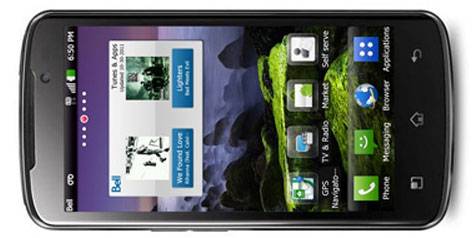
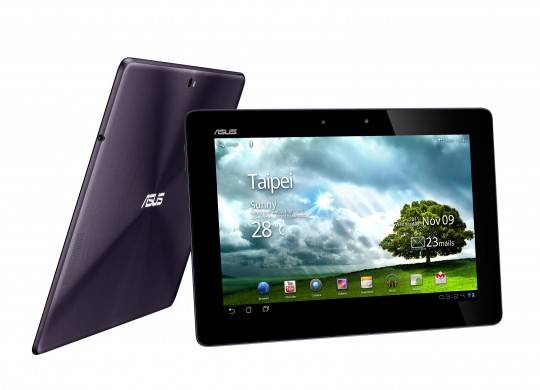
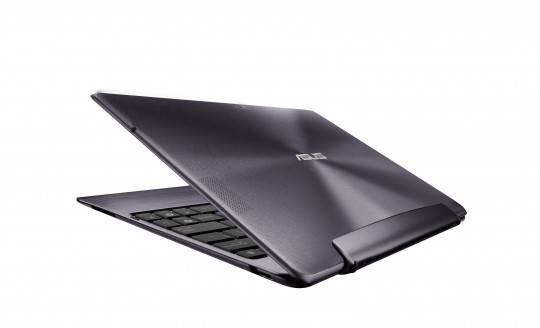

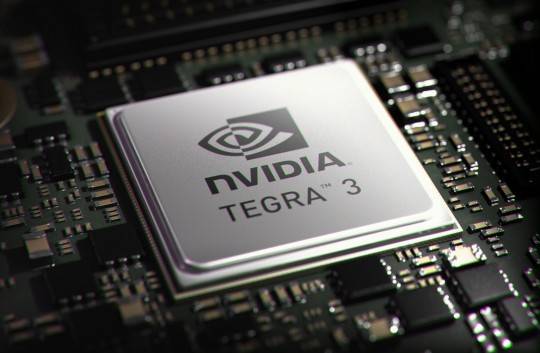


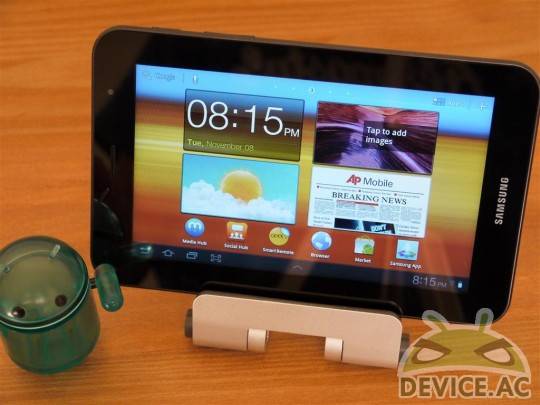
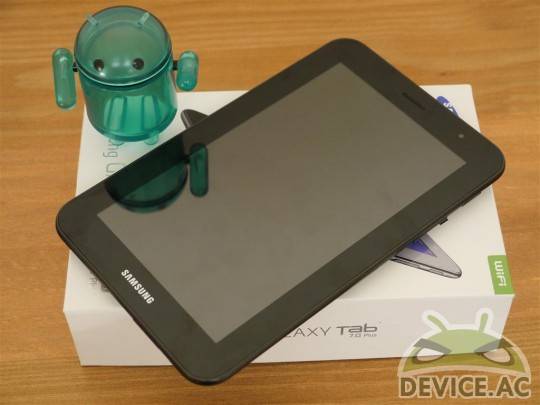
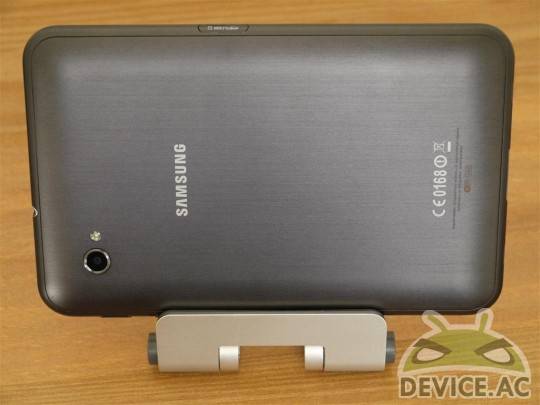
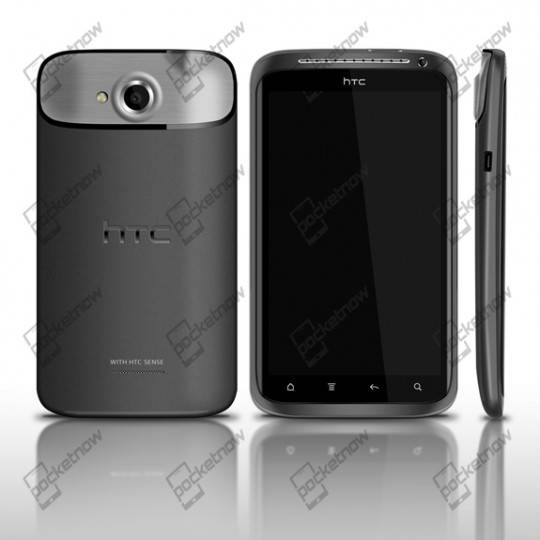
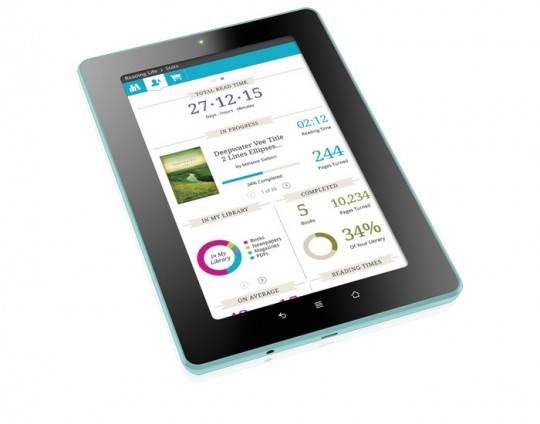
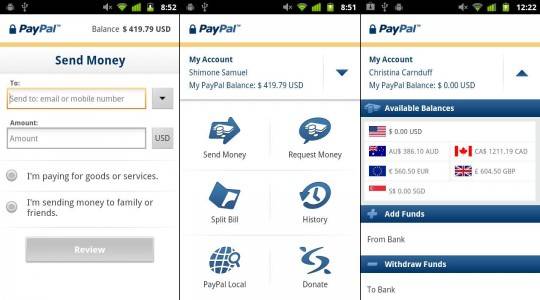
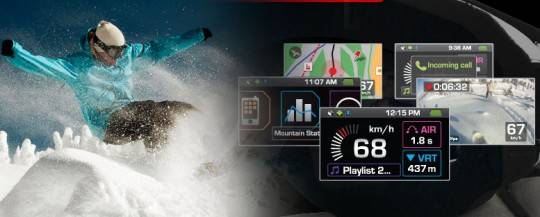




No comments:
Post a Comment